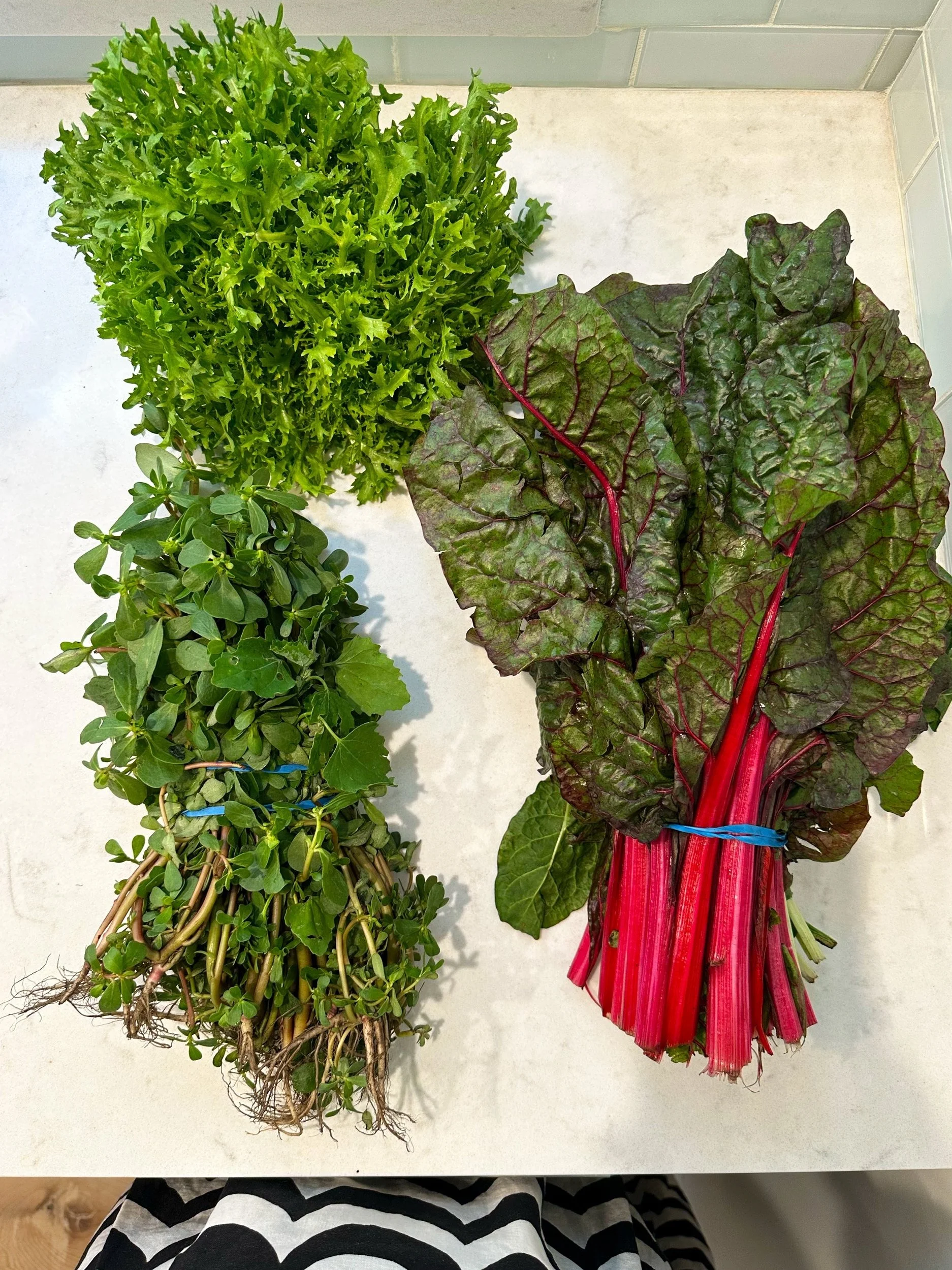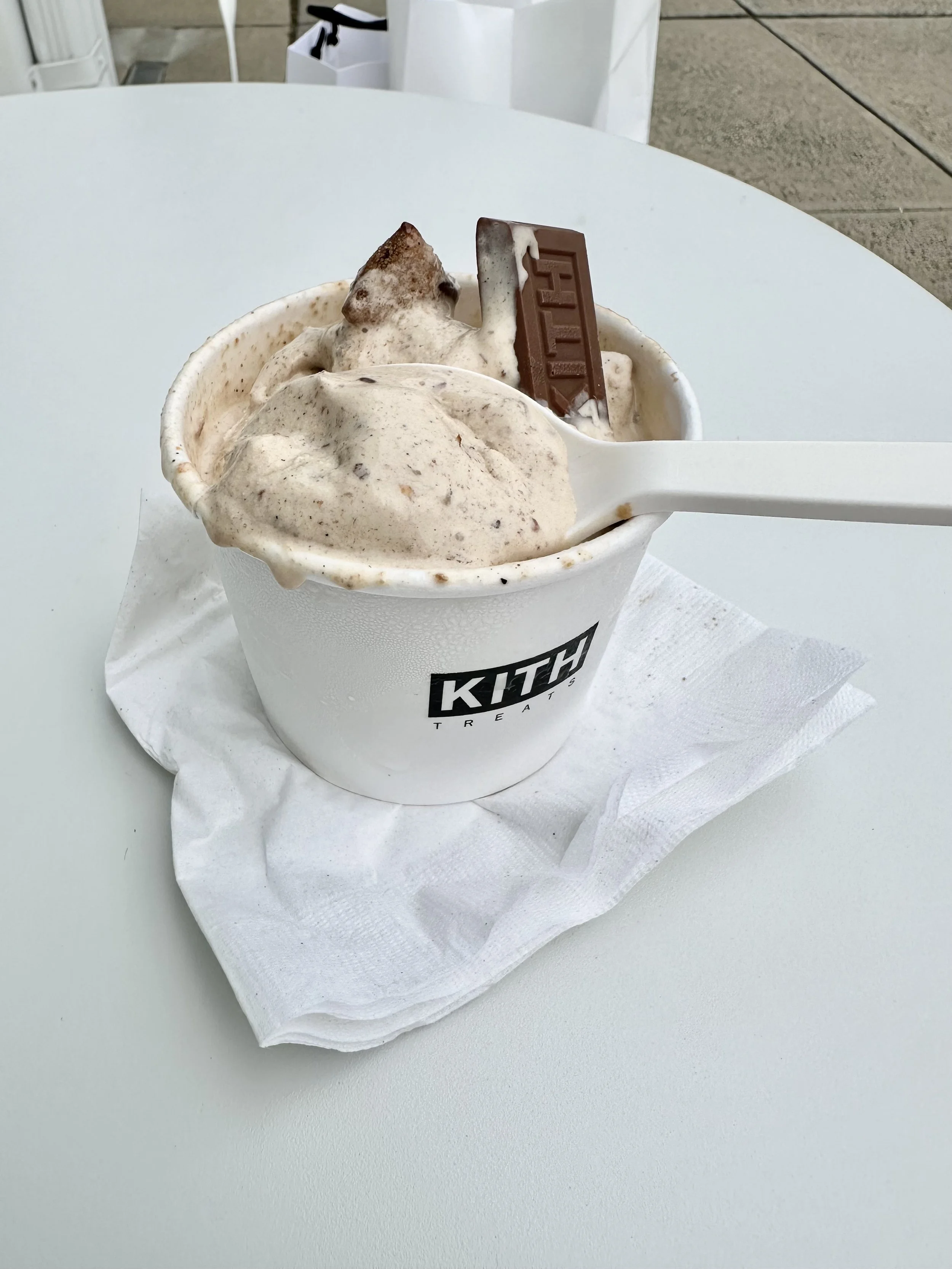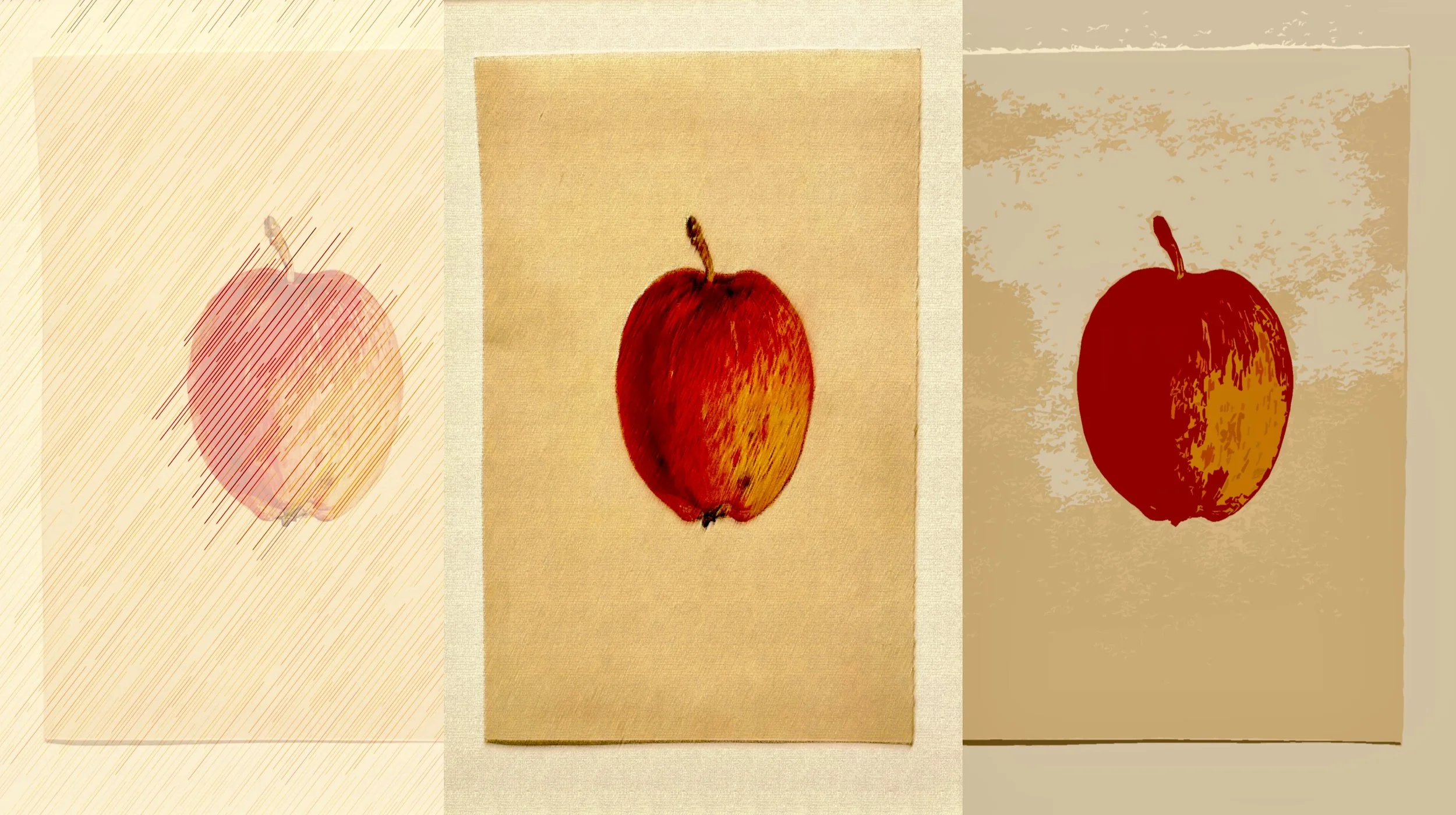Summer’s Cool Elixirs: Purslane, Frisée and Chard
By 4:30pm, Union Square Greenmarket had settled into its afternoon lull- except for Aarti Kuver, PhD: founder of THE MAGAZINE, neuropharmacologist and iron detective by necessity (thalassemia, she’ll tell you).
Late as usual, with Maman x Martha Stewart’s REd iced tea in hand, She bypassed the kale faithful for her iron triumvirate- purslane, frisée, chard. “Function with flair,” she thought, lifting frisée as if analyzing its iron-binding potential via UV-Vis SPECTROPHOTOMETry Eyewear.
Dr. Kuver doesn’t shop- she probes. Each bundle is a data point, each leaf a lesson in bioavailability. Here, nutritional biochemistry meets sunlit produce, lab protocols melting into market momentum.
“Rotating different greens (purslane one week, chard the next) to balance out oxalates, calcium and iron over time.”
When the sun stakes its claim on sky and garden alike, our bodies yearn for relief as much as our palates do. The leafy green trifecta of purslane, frisée and chard arrives with all the panache of a seaside cocktail: bright, refreshing and impossibly good for you. Far from mere garnishes, these summer stalwarts carry a payload of cooling, hydrating and protective compounds.
THE SCIENCE
Summer’s reigning succulent, purslane (Portulaca oleracea), has been elevated from garden weed to superfood thanks to a cascade of clinical inquiries. In a 2023 meta-analysis of randomized controlled trials, purslane supplementation delivered modest but significant reductions in body weight and systolic blood pressure. Beneath its glossy leaves lies an array of omega-3 fatty acids and potent flavonoids. These are molecules proven to quell inflammation and scavenge free radicals in both human and animal studies. Its mucilaginous texture soothes an overheated gut, while its high water content and electrolyte profile quietly restore the balance lost in a day of sunlit sauntering. Intriguingly, emerging cell-culture research suggests purslane extracts may upregulate telomerase activity, the very enzyme that safeguards chromosomal end-caps, hinting at an anti-ageing defense at the cellular level.
PLANTS’ TWO CLEVER IRON-GRABS
Direct Sip
Roots acidify the soil—like adding a squeeze of lemon—to free up iron, then convert it into a “drinkable” form and sip it in through tiny channels.
Buddy System
Some greens send out helper molecules that latch onto iron and wrap it up. Roots spot the package, scoop it in, and voilà—more iron in every leaf.
Frisée, the lacy cousin of chicory, offers a subtler entry. Although no clinical trials address frisée by name, its broader family lineage (Chicorium intybus) is well-documented for bitter phytochemicals that stimulate bile flow, ease digestive sluggishness and bolster liver detoxification in preclinical models. Summer invites the bitter cold of frisée into your salads or chilled bowls: a spoonful of cooling, digestive tonic that counters the heat’s propensity to slow metabolism and encourage stagnation.
5 KITCHEN MOVES FOR IRON-RICH GREENS
1. Choose the Right Stars: Pick reduction-strategy greens (spinach, chard, purslane) for salads or sautés, and treat wheatgrass or barleygrass juices as chelation champs.
2. Gentle Heat to the Rescue: Lightly steam or sauté your greens. Warmth breaks down oxalates (those iron-blocking compounds) without stripping nutrients.
3. Acid Splash: Embrace citrus—lemon juice, lime zest or vinegar dressings mimic roots’ natural acid work, keeping iron in its most absorbable form.
4. Power Pairings : Team your greens with vitamin C sources (bell peppers, strawberries) to boost uptake. Hold off on coffee or tea until after the meal so tannins don’t interfere.
5. Store Smart: Keep unwashed bunches wrapped in a barely damp towel inside a breathable bag. Cool, humid spots lock in iron and fresh flavor.
Now every forkful of purslane, frisée or chard isn’t just a taste of summer’s garden—they’re iron-rich mini-powerhouses primed by plant ingenuity and your kitchen know-how.
Swiss chard steps into the limelight as a nutritional chameleon equally at home in warm or wilted preparations. A 2020 systematic review identified nearly two hundred bioactive compounds in its leaves and stems- betacyanins, flavonoids and non-flavonoid phenolics among them- that collectively deliver antioxidant, anti-inflammatory and diuretic benefits. In the languid heat of midsummer, chard’s high water and mineral content supports gentle detoxification, promotes hydration and helps regulate blood glucose. This is an unspoken boon when the season’s iced lattes threaten to spike insulin.
RECIPES
BOTTOM LINE
In practice, these three greens form an elegant summer ménage à trois: purslane’s succulence and anti-inflammatory heft, frisée’s digestive bite, and chard’s hydrating richness. Together, they nourish without heat, cool without pallor and fortify without heaviness. Whether drizzled with a lemon-mint vinaigrette, tossed through chilled grains or simply massaged with a whisper of oil, they transform the summer table into an alchemist’s workbench—balancing dosha and disposition alike, with the effortless grace of an English garden in full bloom.











